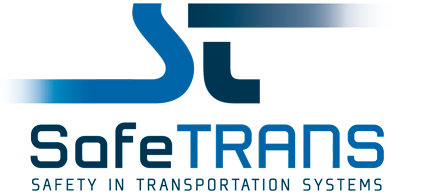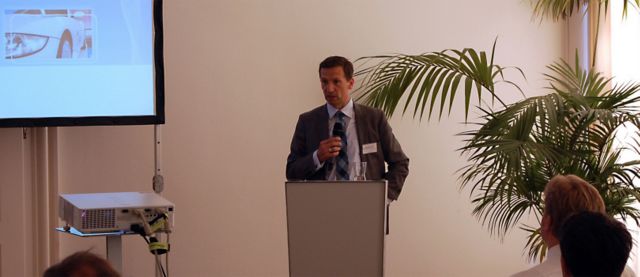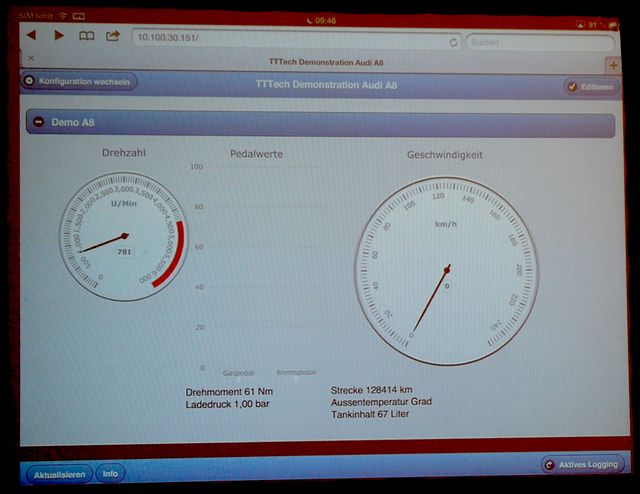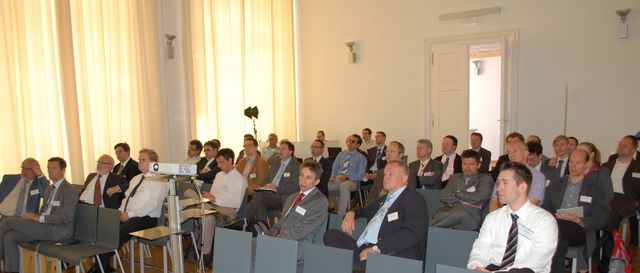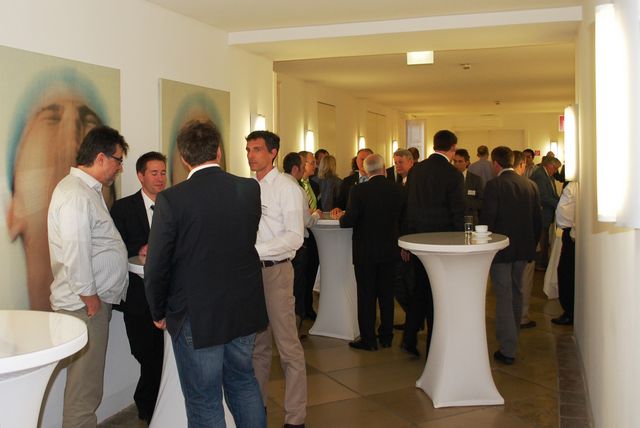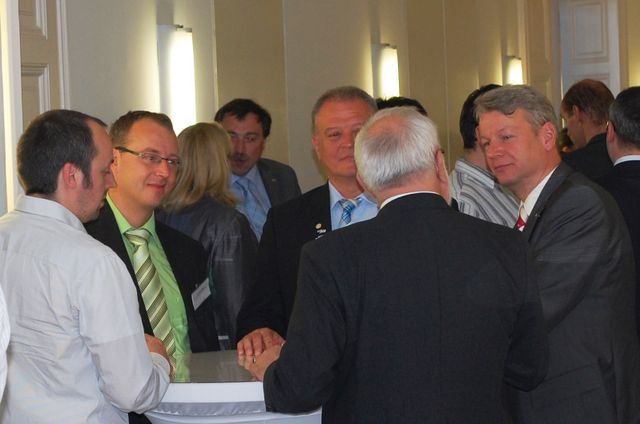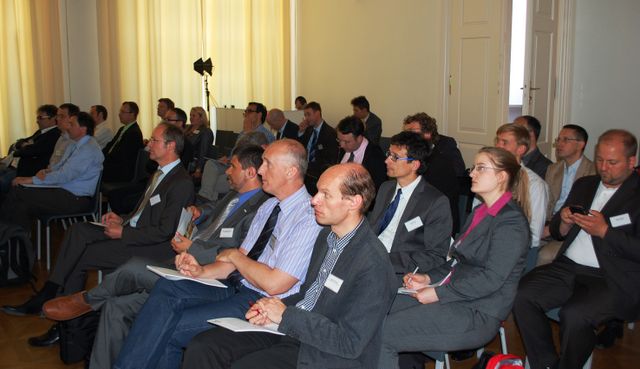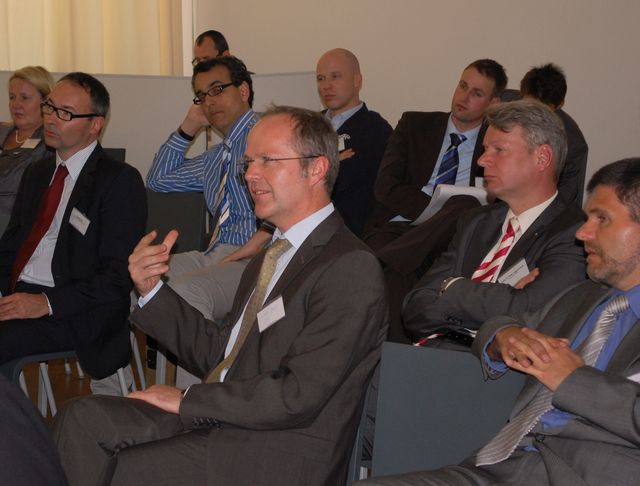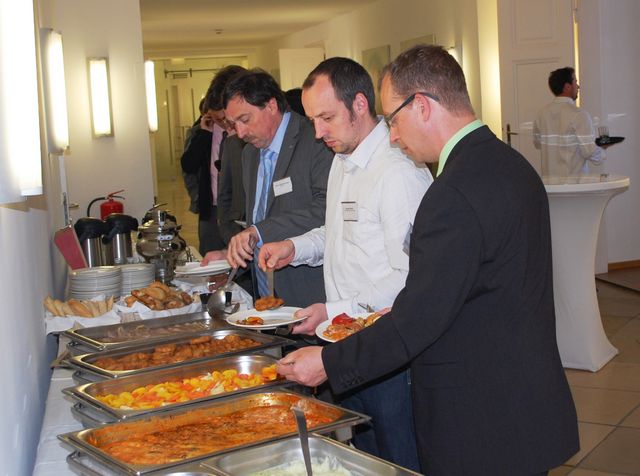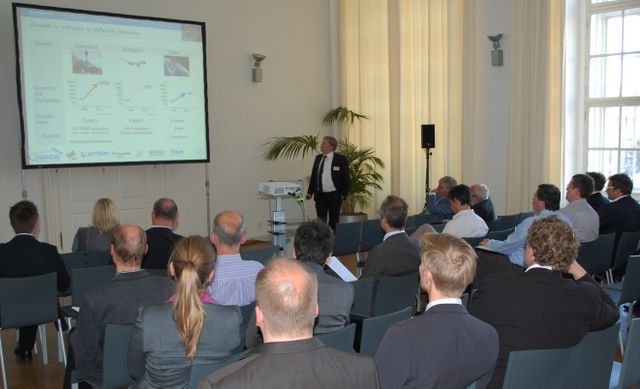| 09:30 – 09:45 |
Begrüßung |
| |
Dr. Stefan Poledna, TTTech Computertechnik AGProf. Dr. Werner Damm, SafeTRANS |
| 09:45 – 10:05 |
High Tech Data Logging for the Automotive Industrial Domain – Live Demonstration |
| |
Dr. Stefan Poledna, TTTech Computertechnik AG |
| 10:05 – 10:35 |
Many-core / Distributed Safety Concept in Automotive Battery Management Systems |
| |
Christian Miedl / Michael Steindl, AVL Software and Functions GmbH
-
The future “electromobility” is already present. Many vehicles are available on the market. Compared to conventional cars the number of electric vehicles is quite small, but in order to further increase the confidence in electromobility functional safety aspects will be major. Independent, whether it is an electrical car, hybrid vehicle or an e-bike, safety of these vehicles has the highest priority. Available solutions are able to reach the targets of functional safety according to ISO26262, but the focus is often on intrinsic safe components. Further developments have to take advantage of the so called decomposition approach which allows reaching targets of functional safety with concurrent optimization of the system architecture. AVL Software and Functions GmbH is contributing to the European research project POLLUX (Process Oriented eLectrical controL Units for neXt generation electrical vehicles, supported by BMBF, FKZ 01IS10002) which aims at the definition of future vehicle control units architecture supporting further energy reduction and reaching safety goals in an efficient way. This paper will show possibilities how to use distributed safety functions which ensures a safe implementation on vehicle level.
Vortragsfolien (passwortgeschützt)
|
| 10:35 – 11:05 |
Safe Migration of Embedded Engine Management Software From Single-core to Multi-core |
| |
Ralph Mader, Continental Automotive GmbH
-
In the past, the software for engine management applications had been executed on single core micro controller. The growing performance requirements and the constraints for power consumption and cost lead to the necessity of using multi core micro controllers for this kind of applications. One challenge for this domain is to reuse software developed for single core with affordable effort of rework in a muti-core environment and providing enough parallelism to gain performance for future functionality. The talk will show the types of multi core controllers used, the challenges for software execution in multi core architectures and the approach Conti-Engine-Systems has chosen to migrate single core software to multi core. How data consistency and sequencing in this environment will be ensured. It will give as well an outlook to the expected trends in this business in the future.
Vortragsfolien (passwortgeschützt)
|
| 11:05 – 11:45 |
Kaffeepause und Networking |
| 11:45 – 12:15 |
Software Architecture Methods and Mechanisms for Timing Error and Failure Detection According to ISO 26262: Deadline vs. Execution Time Monitoring |
| |
Andre Kohn, Audi Electronics Venture GmbH / Dr. Marek Jersak, Symtavision
-
More electronic vehicle functions lead to an exponentially growing degree of software integration in automotive ECUs. We are seeing an increasing number of ECUs with mixed criticality software. ISO26262 describes different safety requirements, including freedom from interference and absence from error propagation for the software. These requirements mandate particular attention for mixed-criticality ECUs. In this paper we investigate the ability to guarantee that these safety requirements will be fulfilled by using established (deadline monitoring) and new error detection mechanisms (execution time monitoring). We also show how these methods can be used to build up safe and efficient schedules for today´s and future automotive embedded real time systems with mixed criticality software.
Vortragsfolien (passwortgeschützt
|
| 12:15 – 12:45 |
Diskussion und Ergebnissicherung |
| 12:45 – 13:45 |
Mittagspause |
| 13:45 – 14:15 |
Safety-Aspekte bei Ausnutzung von Multicore-Architekturen im Umfeld Eisenbahnbetriebssicherung |
| |
Uwe Eckelmann-Wendt, Siemens Vortragsfolien (passwortgeschützt) |
| 14:15 – 14:45 |
Future Reference Architecture for Embedded Systems in Safety Critical Environments |
| |
Georg Stöger, TTTech Computertechnik AG
Vortragsfolien (passwortgeschützt)
|
| 14:45 – 15:15 |
Kaffeepause und Networking |
| 15:15 – 15:45 |
Open Modular Avionics Architecture - Fiction or Vision |
| |
Torsten Vogel, Astrium GmbH
-
Today's spacecraft avionics architecture is characterised by a broad variety of processing modules, operating systems and interfaces for exchanging data between di�erent processing modules. The software that implements most of the satellite functionality has to deal with this fact and is one of the reasons why software has become one of the major cost drivers in satellite projects. Similar problems have triggered developments in other industrial domains like AUTOSAR in the automotive area or Integrated Modular Architecture (IMA) in the aerospace industry. All these initiatives are based on the de�nition of standards for computing platforms and the interfaces between these platforms. The goals of the Open Modular Avionics Architecture for Space Applications (OMAc@S) initiative started by Astrium, Fraunhofer FOKUS, STI, SYSGO and TTTech are to outline a solution that helps to reduce complexity and costs for space avionics signi�cantly. This initiative is partly funded by the German national space agency (DLR) through the project On-Board Computer System Architecture (OBC-SA). In this paper we describe how standardization and the usage of already proven technologies from other industrial domains will help to limit the e�ect of the software development on schedule and costs of satellite projects. In addition we will demonstrate a migration path to make these technologies available for space applications.
Vortragsfolien (passwortgeschützt)
|
| 15:45 – 15:15 |
Model-Based Deployment of Spacecraft Applications on the MUSE Platform |
| |
Renier van Kampenhout, Fraunhofer FOKUS
-
MUSE is a high-performance computing platform for space applications that builds on COTS multicore technology. In this presentation we focus on a use-case in which an autonomous landing manoeuvre is performed based on image recognition, and show how the performance of multicore processors can be exploited while simultaneously using the redundant cores for fault-tolerance. Finding a balanced trade-off between power usage, performance and reliability for each mission phase is a new engineering challenge for future space missions. In software-based systems this can be enabled by efficient deployment of applications onto the hardware resources. We show our model-based approach to software deployment on the basis of the autonomous landing use-case that features two mission phases.
Vortragsfolien (passwortgeschützt)
|
| 16:15 – 17:00 |
Diskussion und Ergebnissicherung |
| 17:00 |
Ende der Veranstaltung |

